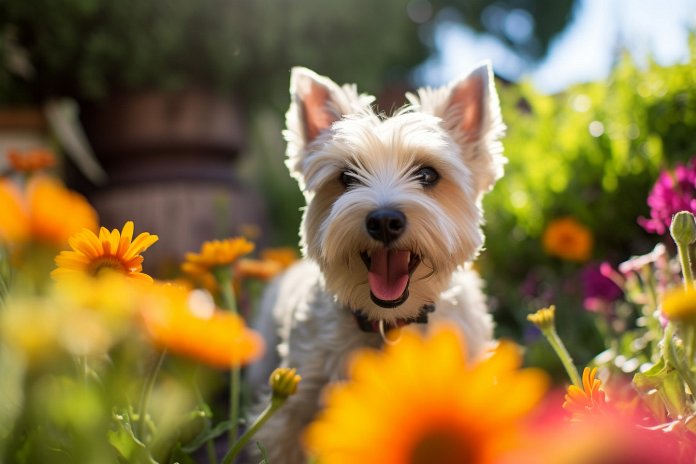
The whiskers on your dog’s face are not just regular hairs. They have an important role in helping your dog understand and interact with their environment. These vibrissae, as they are formally called, are connected to a dog’s nervous system and act as sensory receptors for their vision. It is important to never cut or pluck your dog’s whiskers, as they are highly sensitive and can cause pain or discomfort. Let’s explore how dog whiskers work and why dogs have them.
Signs of Whisker Pain in Dogs:
Whiskers are thicker and coarser than normal dog hair, and they are distributed in a scattered manner on a dog’s face. They can vary in number and appear on different parts of the muzzle and face. The follicles at the base of the whiskers are packed with nerves, so it is important to handle them carefully to avoid causing pain. Dogs may react differently if their whiskers are pulled or plucked, such as pulling away, hiding their face, growling, or yelping. If your dog shows persistent signs of pain around their whiskers, it is advisable to have them checked by a veterinarian.
Body Language:
If your dog is experiencing whisker pain, you may notice signs in their body language, such as growling, whining, low tail carriage, twitching whiskers, and whimpering. Other signs may include pulling away, pawing at the face, bleeding, yelping, or hiding their face.
The Science of Dogs Having Whiskers:
Dog whiskers, or vibrissae, are different from human facial hair. They are long, coarse, and have a rich supply of nerves at the base. Whiskers help dogs navigate their surroundings by picking up vibrations and changes in air currents. They provide important sensory information to the brain, helping dogs “see” better, detect prey, and navigate obstacles. Whiskers may also play a role in the defense strategy of dogs and may have been used to locate food in the past.
Looking After Your Dog’s Whiskers:
Whiskers are more important than regular hair, so it is important to take care of them. There is no scientific evidence that trimming a dog’s whiskers will affect their sensory skills, but anecdotal evidence suggests it may disrupt their spatial awareness. Therefore, it is best to leave whiskers alone. If you have already had your dog’s whiskers groomed, they will grow back. When handling your dog’s face and whiskers, be careful to avoid causing pain by plucking or twisting them.
“Dog whiskers: A crucial sensory tool and essential for your pet’s well-being”

Tips & Things to Know
1️⃣ Never cut or trim your dog’s whiskers: Dog whiskers are not just ordinary hairs, they play a crucial role in helping your dog understand and interact with their environment. Cutting or trimming their whiskers can disrupt their sensory skills and spatial awareness, so it’s best to leave them alone.
2️⃣ Be mindful of your dog’s body language: If your dog’s whiskers are causing them pain or discomfort, they may exhibit signs such as growling, whining, low tail carriage, twitching whiskers, whimpering, pulling away, pawing at their face, bleeding, yelping, or hiding their face. Pay attention to these signs and consult a veterinarian if necessary.
3️⃣ Handle your dog’s whiskers with care: Whiskers are highly sensitive and plucking or twisting them can cause significant pain for your dog. Be careful when handling your dog’s face and whiskers, especially during grooming or bathing. Treat their whiskers gently to avoid causing any discomfort or injury.
Frequently Asked Questions, Answered ✅
1. What is the purpose of dog whiskers?
– Dog whiskers are sensory receptors that aid a dog’s vision and help them understand and interact with their environment.
2. What signs indicate that a dog’s whiskers may be causing pain?
– Signs of whisker pain in dogs can include growling, whining, low tail carriage, twitching whiskers, and whimpering.
3. How do whiskers help dogs navigate their surroundings?
– Whiskers pick up changes in air currents and vibrations, providing important information about the world around them. They help dogs determine the presence of prey, detect nearby motion, and navigate obstacles.
4. Should dog whiskers be trimmed or groomed?
– There is no scientific evidence that trimming a dog’s whiskers will hamper their sensory skills. However, removing whiskers can disrupt a dog’s spatial awareness and lead to confusion, so it is safest to leave them alone.
5. Should dog owners pluck or twist their pet’s whiskers?
– No, plucking or twisting a dog’s whiskers will cause significant pain for the dog. It is important to be careful when handling a dog’s face and whiskers and to avoid causing any discomfort.